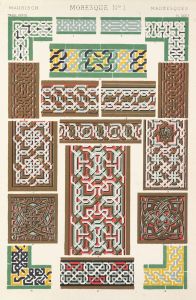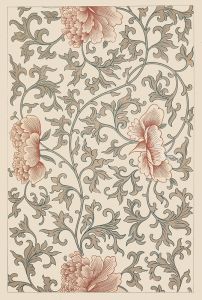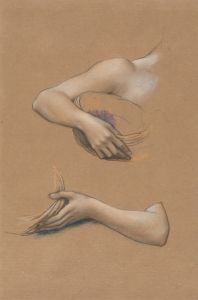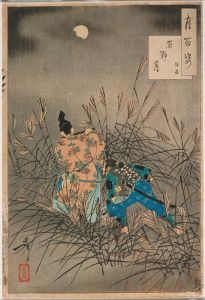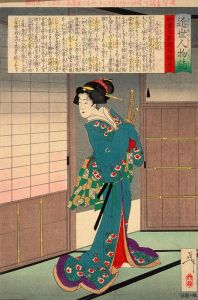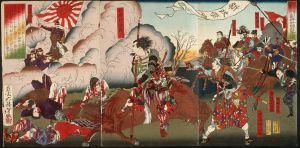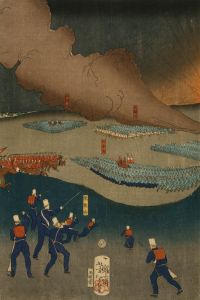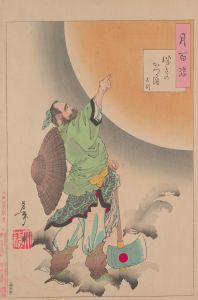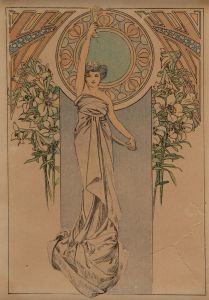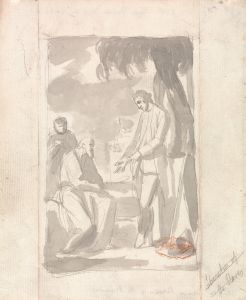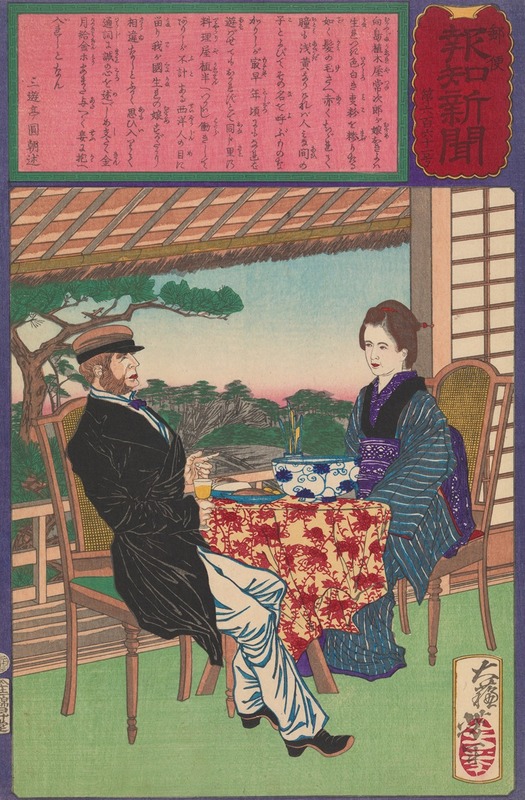
Okiyo, Daughter of a Gardener in Mukōjima and a Foreigner
A hand-painted replica of Tsukioka Yoshitoshi’s masterpiece Okiyo, Daughter of a Gardener in Mukōjima and a Foreigner, meticulously crafted by professional artists to capture the true essence of the original. Each piece is created with museum-quality canvas and rare mineral pigments, carefully painted by experienced artists with delicate brushstrokes and rich, layered colors to perfectly recreate the texture of the original artwork. Unlike machine-printed reproductions, this hand-painted version brings the painting to life, infused with the artist’s emotions and skill in every stroke. Whether for personal collection or home decoration, it instantly elevates the artistic atmosphere of any space.
Tsukioka Yoshitoshi (1839–1892) was a prominent Japanese ukiyo-e artist, known for his innovative and dramatic woodblock prints during the late Edo and early Meiji periods. His works often explored themes of history, folklore, and the supernatural, as well as the changing cultural landscape of Japan during his lifetime. One of his notable prints is titled Okiyo, Daughter of a Gardener in Mukōjima and a Foreigner.
This artwork is part of Yoshitoshi's series Fūzoku Sanjūnisō (translated as "Thirty-two Aspects of Customs"), which was published in 1888. The series is celebrated for its detailed and expressive depictions of women from various social classes and time periods, showcasing their beauty, emotions, and roles in society. Each print in the series is accompanied by a descriptive title that provides context about the subject portrayed.
In Okiyo, Daughter of a Gardener in Mukōjima and a Foreigner, Yoshitoshi illustrates a young woman named Okiyo, who is described as the daughter of a gardener in Mukōjima, a district in Edo (modern-day Tokyo) known for its scenic beauty and cherry blossoms. The inclusion of "a foreigner" in the title suggests a narrative or interaction involving a non-Japanese individual, reflecting the increasing presence of foreigners in Japan during the Meiji Restoration, a period of rapid modernization and international exchange.
The print exemplifies Yoshitoshi's mastery of composition, color, and line work. His attention to detail in the clothing, facial expressions, and background elements brings the scene to life, while also providing insight into the cultural and social dynamics of the time. The series as a whole is considered a significant contribution to the ukiyo-e tradition, as it captures the transitional period between traditional and modern Japan.
While specific details about the narrative or inspiration behind this particular print are not extensively documented, it remains an important example of Yoshitoshi's ability to blend traditional Japanese aesthetics with contemporary themes. His work continues to be studied and admired for its artistic and historical significance.






